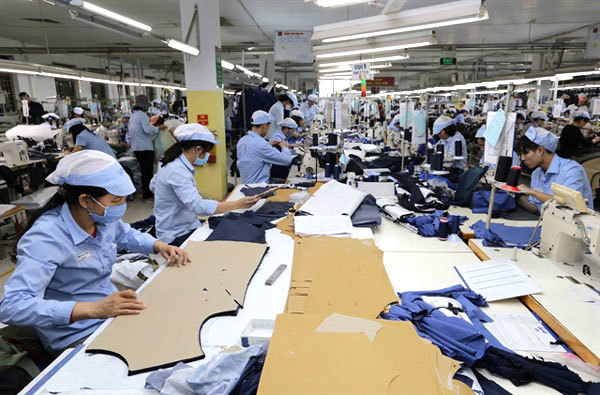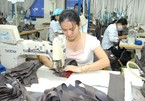 |
| Production of garment products at Duc Giang Garment Co, Ltd, Long Bien, Hanoi. Vietnam wants to hit $40 billion in textile export turnover in 2019. VNA/VNS Photo Tran Viet |
To achieve this target, the industry needs export value growth of at least 11-12 per cent for the rest of the year, he said.
According to the association, growth reached only 9.1 per cent in the third quarter, much lower than the same period in 2018. However, it was higher than other textile producers including China, India and Bangladesh.
The association is hoping textile enterprises will be able to deliver big orders to push export value up in December.
The most important thing is for textile and garment enterprises to search for markets and alternative partners. Currently, the businesses can take advantage of the Vietnam-EU Free Trade Agreement (EVFTA) and the Comprehensive and Progressive Agreement for Trans-Pacific Partnership (CPTPP) to promote export expansion to some markets in the EU as well as Canada and Australia.
Canada holds a lot of potential for Vietnam with import value of textiles and garments reaching more than $13 billion each year, while Vietnam's textile and apparel exports to this market reach only about $550 million per year.
Vietnam does not have a free trade agreement (FTA) with Canada so the CPTPP opens the door for Vietnam's textile and apparel products. Businesses need to seize this opportunity and seek partners in Canada.
Than Duc Viet, general director of Garment 10 Corporation, said to achieve export success, enterprises needed to be aware of requirements on price, quality, quantity and production time. Moreover, they must also ensure production stability.
At the same time, enterprises also needed to cooperate with each other through affiliate programmes and support from the association to meet the rules of origin stated in FTAs.
Enterprises, especially small businesses, should build a production chain to meet the demand of large contracts in terms of quantity, quality and time of delivery, as well as to create a name for themselves.
In recent years, the textile and garment industry had developed strongly and exports had grown year by year, according to the association. However, it still faced many challenges in production and business, such as low labour productivity, lack of high quality human resources and mainly processing products rather than manufacturing them.
In addition, challenges from export markets had also put pressure on them, including increasing protectionism, higher quality demands, and environment and technical tests.
According to VITAS, local apparel producers were facing falling export orders. Since mid 2019, some businesses had been able to sign export contracts for small quantities each month.
Meanwhile, in the same period last year, many large enterprises had export orders stacked up till the end of the year.
Cao Huu Hieu, CEO of Vietnam Textile and Garment Group (Vinatex), said most textile and garment businesses did not have enough orders to keep them operating until the end of the year.
Large businesses such as Garment 10 Corporation, Đức Giang Garment Joint Stock Company, Hoa Tho Textile Garment Joint Stock Corporation, Hanoi Textile and Garment Joint Stock Corporation (Hanosimex) had export contract to maintain production until November, but only
Viet Tien Garment Joint Stock Company was going to be busy until the year-end.
Hieu said given the current situation, the industry would find it difficult to reach the export target of $40 billion this year. - VNS

Garment, textile industry gradually loses its advantages
Export target of US$40 billion of garment and textile industry this year is on the verge of failing to achieve due to several difficulties, such as a shortage of orders and high dependence on imported materials.

VN textile-garment thrives with technology
Adopting advanced technology and improving the localisation ratio of materials and accessories are textile and garment enterprises’ best chance.

VN apparel industry suffers due to lack of competitive dyeing, fabric segments
Lopsided development of its various segments and dependence on imports have weakened the textile industry’s competitiveness and creativeness, experts said.
 The domestic textile and garment industry was still striving to reach its export revenue target of US$40 billion this year despite facing many difficulties, said Vu Duc Giang, chairman of the Vietnam Textile and Apparel Association (VITAS).
The domestic textile and garment industry was still striving to reach its export revenue target of US$40 billion this year despite facing many difficulties, said Vu Duc Giang, chairman of the Vietnam Textile and Apparel Association (VITAS).